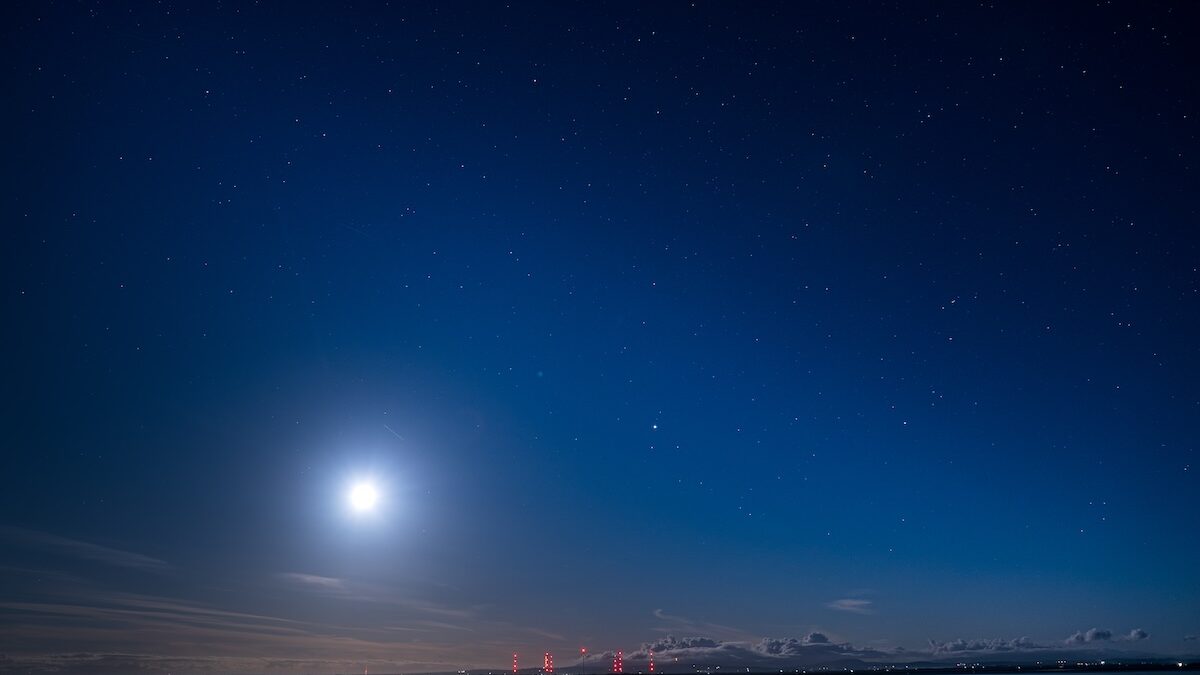A global space sector conference involving some of the world’s foremost lunar scientists will take place next week in Scotland’s ‘dark skies’ national park.
Dumfries and Galloway will host the European Lunar Symposium 2024 with speakers from NASA and both the European and UK Space agencies.
Over 150 leading figures from the international lunar science and exploration community will convene for the first time under the June ‘Strawberry Full Moon’.
The event, from June 16 to 21, is hosted by The Open University and will showcase global advancements in lunar research and humanity’s future on the moon.
Professor Mahesh Anand, OU Professor of Planetary Science and Exploration, has co-chaired the symposium held at various locations across Europe since its inception in 2012.
The event is Europe’s premier ‘Moon-focused meeting’, attracting experts from across the world to discuss latest developments in science and Moon exploration.
A partnership between NASA Solar System Exploration Research Virtual Institute and its European nodes, it takes place from 16-21 June at The Crichton on the outskirts of Dumfries.
As well as the scientific plenary sessions of the symposium itself, the event will include a schools’ programme – such as OU academic and NASA representative-run workshops – and public talks, aimed at inspiring the people of Dumfries and Galloway and leaving behind a new lunar legacy for the region.
Professor Anand said: “As well as bringing colleagues from across the world to this beautiful part of the country, I am also keen to influence younger generations and encourage them to believe that they too can make a big difference in lunar exploration – and that they don’t need to go to the Moon to do it.
“There needs to be a legacy from this event and by inspiring young people to get involved in the space economy, I feel confident that these young people will go on to pursue their interests and make a significant impact in the future that will be of benefit to the wider society.”
High-profile speakers will include representatives from the National Aeronautics and Space Administration (NASA), the European Space Agency (ESA), the Japan Aerospace Exploration Agency (JAXA) and the UK Space Agency (UKSA).
Dr Fujimoto Masaki, JAXA deputy director general, will give a public talk about Japan’s Moon landing in January of this year, along with speakers involved in recent and upcoming lunar missions, on the evening of the summer solstice, Thursday 20 June.
Both the OU in Scotland’s existing relationship with partners in South of Scotland and the region’s strong association with Neil Armstrong (the first man to walk on the Moon) were part of the decision to host the ELS 2024 in Dumfries and Galloway – the seat of Clan Armstrong and where people lined the streets when Neil Armstrong spoke at Langholm Town Hall in 1972.
The sparsely populated and thus hardly light polluted Galloway region has one of Europe’s darkest skies, making it ideal for stargazing. Galloway Forest Park was designated a ‘Dark Sky Park’ – Britain’s first – in 2009 by the International Dark Sky Association, recognising its special status.
A committee of local partners and stakeholders including the South of Scotland Enterprise Agency, The Crichton Trust, The Crichton Foundation, The Crawick Multiverse Trust and South of Scotland Destination Alliance have been supporting OU colleagues to plan and deliver the ELS.
Professor Russel Griggs, chair of development agency South of Scotland Enterprise (SOSE), said: “This is a fantastic accolade for Dumfries and Galloway to host the European Lunar Symposium and it is making use of the excellent facilities on offer at the Crichton Estate.
“The region does not only have a proud role in the history of moon and lunar exploration, but the area also has the Kirkcudbright Dark Skies Planetarium as well as the Galloway International Dark Sky Park. The space sector presents the South of Scotland with numerous opportunities, and SOSE will be soon revealing plans on how we can blend the region’s significant traditional strengths with new space services and technologies.”




